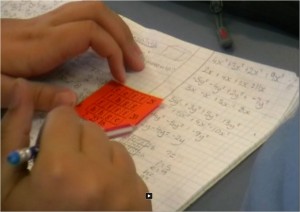I see students satisfied to give a ‘tidy number’ answer, but not so confident if the solution takes another form (fraction, rule, etc).
My students are able to give the process verbally but unable to give a written rule.
My students have had no exposure to the algebraic concept of a generalised number. This is a major change from the days when we explicitly taught identity elements and the associative and commutative rules of operations.
How do we know generalised number is challenging for our students to learn?
We assess our students with a Generalised Number Diagnostic Test.
We have plenty of evidence from our diagnostic assessments and observing our students that they have little or no formal idea of generalised number. (One or two students in extension classes are the exception, rather than the rule.) Students need to have very sound prerequisite knowledge of number, in order to be able to generalise the rules of number. My students struggle to generalise the commutative and associative rules. For example, 7 + 23 = 23 + 7 generalises to a + b = b + a, and problems like 4 x 37 x 25 = 4 x 25 x 37 = 3700 can be used to generalise a x b = b x a.
-
View a video clip from Garry’s classroom where he makes a link to generalised number in a geometry context
So what have we done to help our students understand generalised number?
We have changed the way we approach our teaching by:
- Showing students how algebra is everywhere in our lives
- Establishing what each student understands through assessment
- Promoting algebraic thinking with rich and meaningful contexts
- Demonstrating the benefits of rigour and correct use of vocabulary
- Building a “toolbox” of knowledge and skills that students can use appropriately and efficiently


